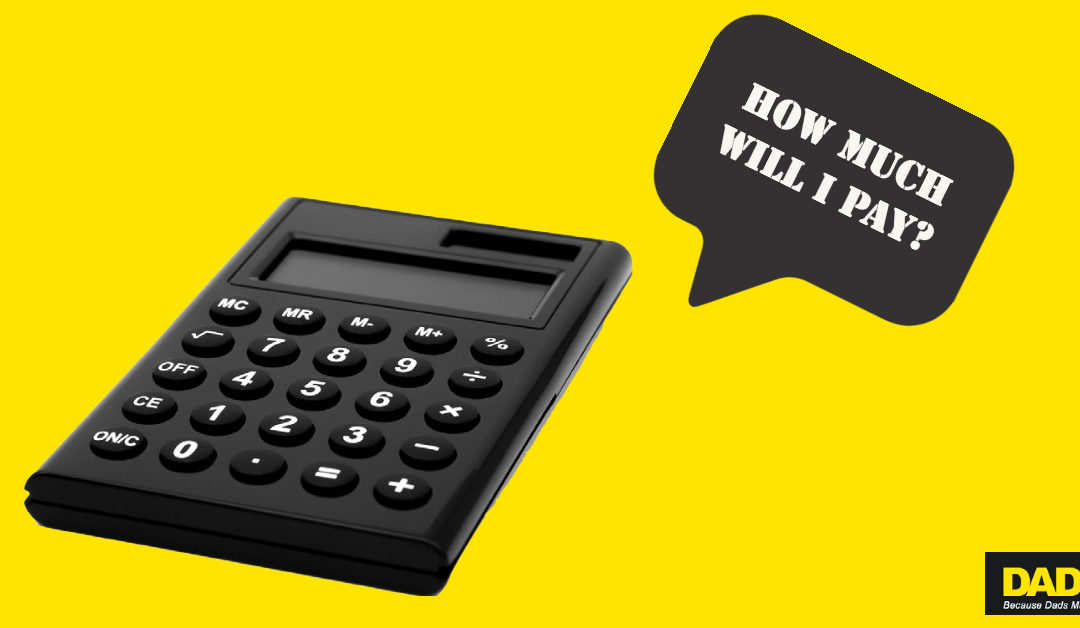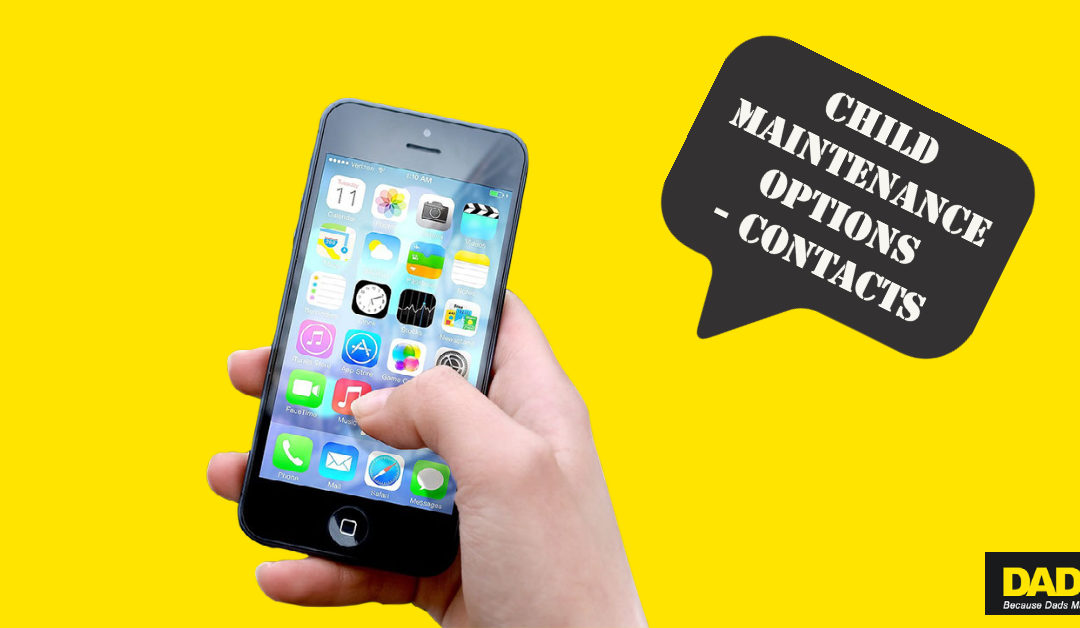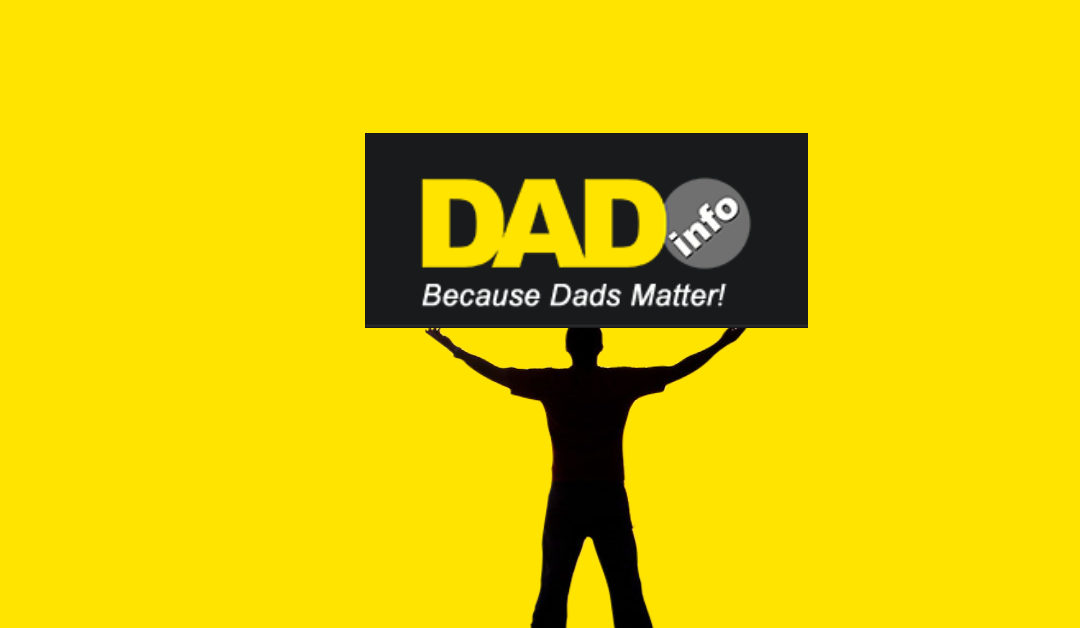We asked the Department For Work and Pensions your Child Maintenance Service Charging questions and they have provided us with the answers. So here you go, kick back and have a good read – because this article contains every bit of information you could ever wish to know about Child Maintenance Charges
Why should I be made to pay the extra 20% each month just because my Ex doesn’t want a direct payment even though I’ve never missed a single payment? This is unfair on the people that are struggling to pay all ready. Plus 20% is way too much to charge for an admin charge.
Either parent can now choose Direct Pay without the others consent. The only exception is if it is deemed likely that the parent will fail to pay.
They will make this decision based on your behaviour and/or payment history – so if you’ve never missed a single payment it is likely that you will be able to choose Direct Pay and avoid having to pay collection fees.
I only get £7 a week, and you want to take charges from that?
The minimum amount paid each week in Child Maintenance Service cases is £7. Here receiving parents will still be able to avoid paying a 4% collection fee (28p a week out of the £7) by choosing Direct Pay.
I am paying via the CSA at the moment will my case automatically move over to the Child Maintenance Service?
In 2014, the CSA begin the process of contacting all clients to end their current child maintenance arrangements on its 1993 and 2003 schemes. If you are affected, you will get a letter up to 6 months beforehand, giving you a chance to put a new arrangement in place. Until you receive a letter, you do not need to do anything. When contacted, parents will be encouraged to think about making their own family-based arrangement, while those who can’t will be able to make an application to the Child Maintenance Service.
Parents will be offered help and support through this change to help them make the child maintenance arrangement that’s right for them. We expect it to take about three years to contact every parent and end all CSA arrangements.
Why are you charging us, isn’t this just a child tax? Or a divorce tax?
The government wants to encourage more parents to think about working together to arrange child maintenance instead of using the Child Maintenance Service or the courts.
It doesn’t cost parents money to sort out child maintenance between themselves, and the government believes that charging both parents to use the service will encourage them to consider working together to arrange child maintenance. Children often do better with both parents involved in their children’s lives. And we can support this by encouraging both parents to work together to agree their maintenance arrangements.
Currently, the statutory child maintenance service is funded entirely by taxpayers. The fees and charges will contribute towards the running of the service, but it will still be heavily subsidised by the taxpayer.
What happens if I pay my maintenance but refuse to pay the extra 20%
The only ways you can avoid paying collection fees are by agreeing a family-based arrangement with your child’s other parent, or by choosing Direct Pay and paying them in full and on time.
If you’re on Collect & Pay the Child Maintenance Service will treat every payment you make as if it included a 20% collection fee.
Therefore, if you were asked to pay £60 (made up of £50 in child maintenance and £10 in collection fees) but only paid £50, the Child Maintenance Service would consider £8 of your payment to be a collection fee and £42 to be child maintenance.
You would be deemed to still owe £8 in child maintenance and £2 in unpaid collection fees. You could face enforcement action on the outstanding amounts and further charges – and your children would miss out on the amount you hadn’t paid.
If you chose to pay using Direct Pay, however, you could pay £50 and your children would benefit from the full amount.
Can I be forced to go on collect and pay?
Only if your child’s other parent wants to go on Collect & Pay and the Child Maintenance Service believes that you would be unlikely to pay using Direct Pay.
The exact reasons the Child Maintenance Service will use to decide if someone is unlikely to pay are on an individual basis – but a poor payment history is likely to be a key factor.
If you’ve made every payment you should have on-time and in-full and you are content to continue to pay the other parent direct then it’s unlikely you’d be forced to go on Collect & Pay.
I have heard there is also an application fee. What is it and who has to pay it? Does anyone not have to pay it?
The Government introduced a £20 application fee, payable by the applicant, which could be either parent. The applicant will have to pay the fee before their application can go through.
The only exceptions are parents under 19 at the time of applying and those who have suffered domestic violence or abuse and have reported this to an appropriate body. Because Child Maintenance is a devolved matter in Northern Ireland, and because Northern Ireland Ministers have decided not to introduce the application charge, applicants who live in Northern Ireland will not have to pay application fee.
What if I have to make multiple applications, do I only pay once?
The number of application fees you pay will be based on the number of cases you apply for. A “case” is made up of one mother, one father and however many children they have together.
For example, if a father who has two children to one mother would have one case, and pay one application fee if he made an application to the Child Maintenance Service.
If a father has two children to one mother and one child to another – and is separated from both – then he would need two cases, and would pay two application fees.
That said, not everyone in that situation would need two cases – it could be possible to have a Child Maintenance Service case with one mother and a family-based arrangement with the other, for example.
Applications fees are payable by the person making the application only.
Is there an application fee for the direct pay scheme?
Yes. On Direct Pay the Child Maintenance Service will still track down the other parent, get the paying parent’s income information (usually direct from HMRC), work out a child maintenance amount and step in to enforce payments should the paying parent fail to make them in full and on time.
I’m on benefits do I have to pay any of the fees?
Yes – if you apply to the Child Maintenance Service you will still need to pay the £20 application fee, and if you pay or receive child maintenance using Collect & Pay you will still pay a collection fee (20% if you are a paying parent, 4% if you are a receiving parent).
All parents will be able to avoid having to pay collection fees by agreeing to use Direct Pay, and the paying parent will always be able to choose Direct Pay unless the Child Maintenance Service believes they are unlikely to pay without the intervention of the collection service.
My ex says she will make me go through Collect and Pay so I have to pay 20% more. Do I have any say in this; I would rather use Direct Pay.
No, the law has changed so that either parent can choose Direct Pay without needing the other parent to agree.
The only exceptions to this will be where the Child Maintenance Service believes the paying parent is unlikely to pay without the intervention of the collection service.
They will make this decision based on your behaviour and/or payment history – so it’s more important than ever that you pay in full and on time so that you can have the best chance of being able to pay through Direct Pay as soon as you have the chance to do so.
Are there any other costs other than the application fee, 20% charge to non resident parents and 4% to the resident parent?
The Government introduced the following enforcement charges to paying parents who do not pay in full and on time.
These charges are:
- £300 if they have to apply for a liability order
- £200 if they have to take out a lump sum deduction order
- £50 if they have to take out a regular deduction order and
- £50 if they have to take out a deduction from earnings order or deduction from earnings request.
If I am using direct pay, what can I use as proof of payment? Should I have proof that I have paid?
The Child Maintenance Service will advise clients of potential payment methods but every relationship is different and it is up to clients to determine what works best for them. The Child Maintenance Service will, however, strongly recommend that whatever method is chosen clear records are kept to prevent disputes occurring for example, paying by Standing Order so you can use bank statements as proof of payment.
How can I avoid having to pay any charges?
You won’t have to pay any fees or charges if you set up a family-based arrangement with your child’s other parent. These are flexible arrangements between both parents about who will provide what for a child – without the Child Maintenance Service’s involvement.
They don’t just have to be about money. For example, you both could agree that you will provide school uniforms as part of your arrangement – or whatever you both agree is best for your child.
If you have an existing Child Maintenance Service case then the person who applied to open it would need to ask us to close your child maintenance case before you can set up a family-based arrangement. That means it depends very much on both of you being able to work together to make the best arrangement for your child.
You can start to think about a family based arrangement now and find out more about the options available by visiting the Child Maintenance Options site. This is a free and impartial service that provides support and advice to separated parents to help them make decisions about their child maintenance arrangements.
You won’t have to pay collection fees if you pay or receive child maintenance using Direct Pay. This is where the Child Maintenance Service works out how much child maintenance should by paid, but parents agree between themselves how the paying parent will make the payments.
These are the only ways you can avoid paying these fees. You cannot avoid them by making future child maintenance payments in advance of the law changing, for example. We will send everyone with a Child Maintenance Service case a new Payment Plan – including collection fees – after that date, and any overpayments will be classed as payments towards this new Payment Plan.
My ex keeps talking about an Unlikely To Pay test? What is it and how does it work?
When fees and charges were introduced, the law was changed so that most paying parents can choose Direct Pay without needing the other parent to agree.
The only exceptions to this will be where the Child Maintenance Service believes the paying parent is unlikely to pay without the intervention of the collection service.
The Child Maintenance Service will make that decision when a paying parent asks to go on Direct Pay and the receiving Parent doesn’t agree. The exact reasons they will use to decide if someone is unlikely to pay are individual – but a poor payment history is likely to be a key factor.
If you’ve made every payment you should have on-time and in-full and you are willing to continue to make payments then you won’t be considered unlikely to pay.
Will maintenance calculations change for the new service? If so what will they be, I have heard it’s going to be really complicated?
The amount of maintenance calculated by the CMS is designed to be broadly similar to that of the previous (2003) CSA scheme. The main difference is that the CMS uses gross (i.e. before tax) rather then net (i.e. after tax) income so that it can work easily with HM Revenue and Customs information, with the liability percentages adjusted accordingly.
In most cases, we follow six steps when we work out how much child maintenance a paying parent must pay.
- Step 1 – Income
We find out a paying parent’s yearly gross income or we check if they are getting benefits using information provided by Her Majesty’s Revenue & Customs (HMRC)
- Step 2 – Things that affect income
We check for certain things that could change this gross income amount, such as pension payments, or other children who the paying parent supports.
We also convert the yearly gross income amount to a weekly figure.
- Step 3 – Child maintenance rates
We apply one of four rates, based on the amount of gross weekly income.
- Step 4 – Children we take into account
We take into account the number of children who the paying parent must pay child maintenance for and any family-based arrangements.
- Step 5 – Weekly amount of child maintenance
Using information from the first four steps, we make a decision about a weekly child maintenance amount.
- Step 6 – Shared care
Finally, if this applies, we make a deduction to this weekly amount of child maintenance depending on the average number of ‘shared care’ nights a week. ‘Shared care’ is when a child’s paying parent must pay child maintenance for stays overnight with them.
Following all six steps gives us a total weekly amount of child maintenance.
The calculator on Child Maintenance Options gives you an indication of the amount that you could expect to pay or receive. The calculation is based on the rules that the Child Maintenance Service currently use.
This article should answer all your questions about Child Maintenance Service charges however if you have a query not covered here then pop over to the DAD forum and ask your question.
Updated: September 2017








